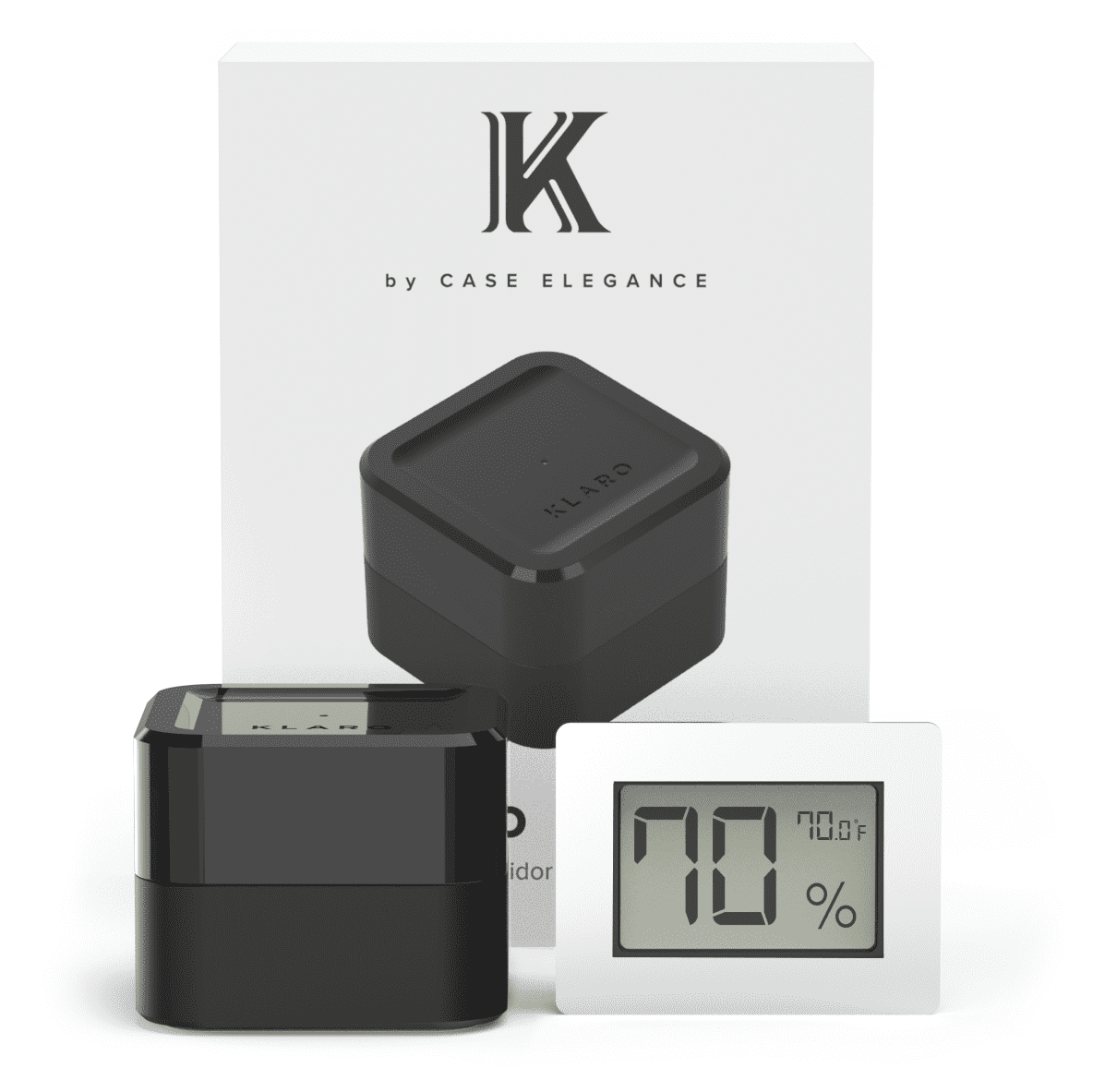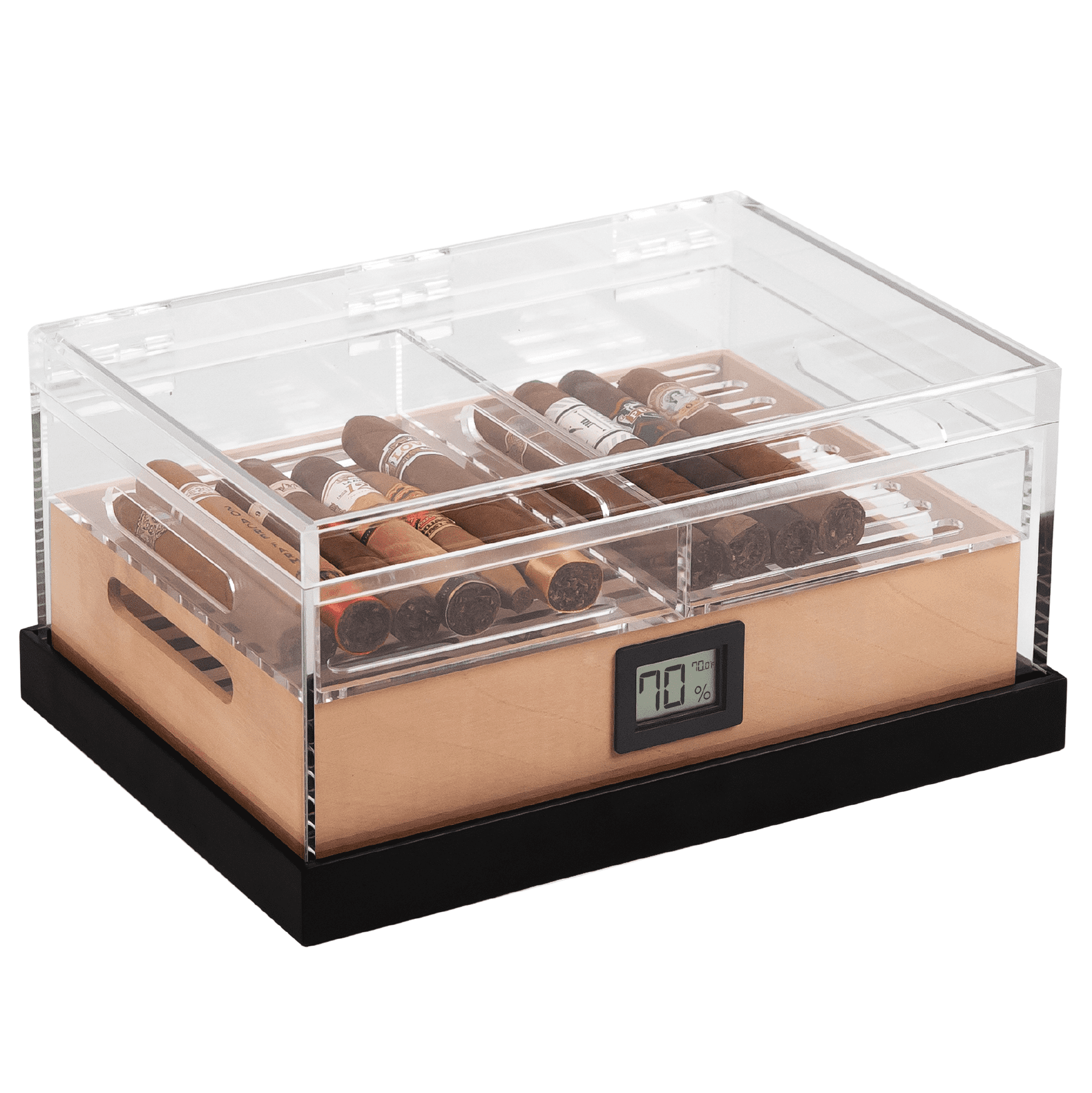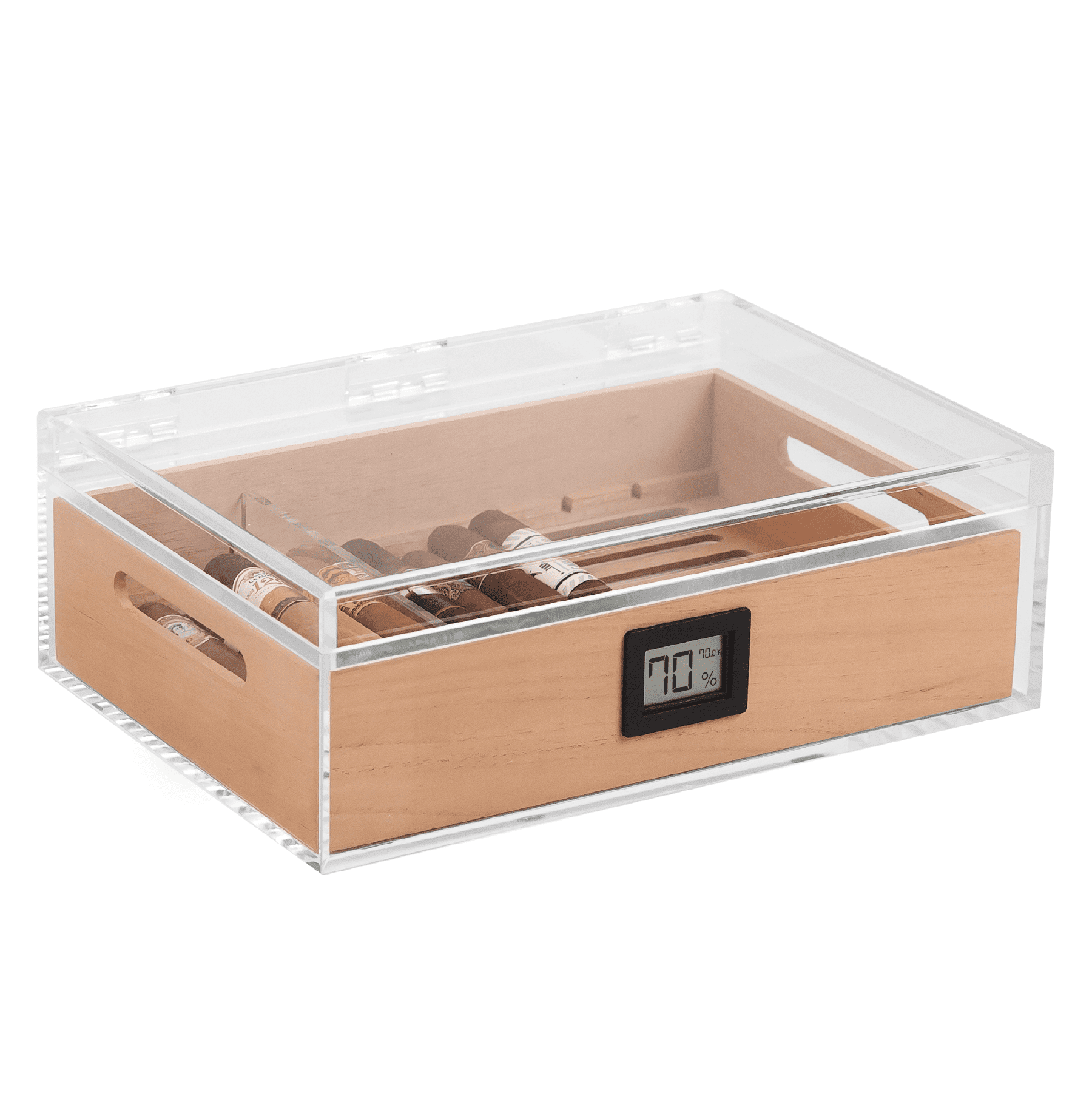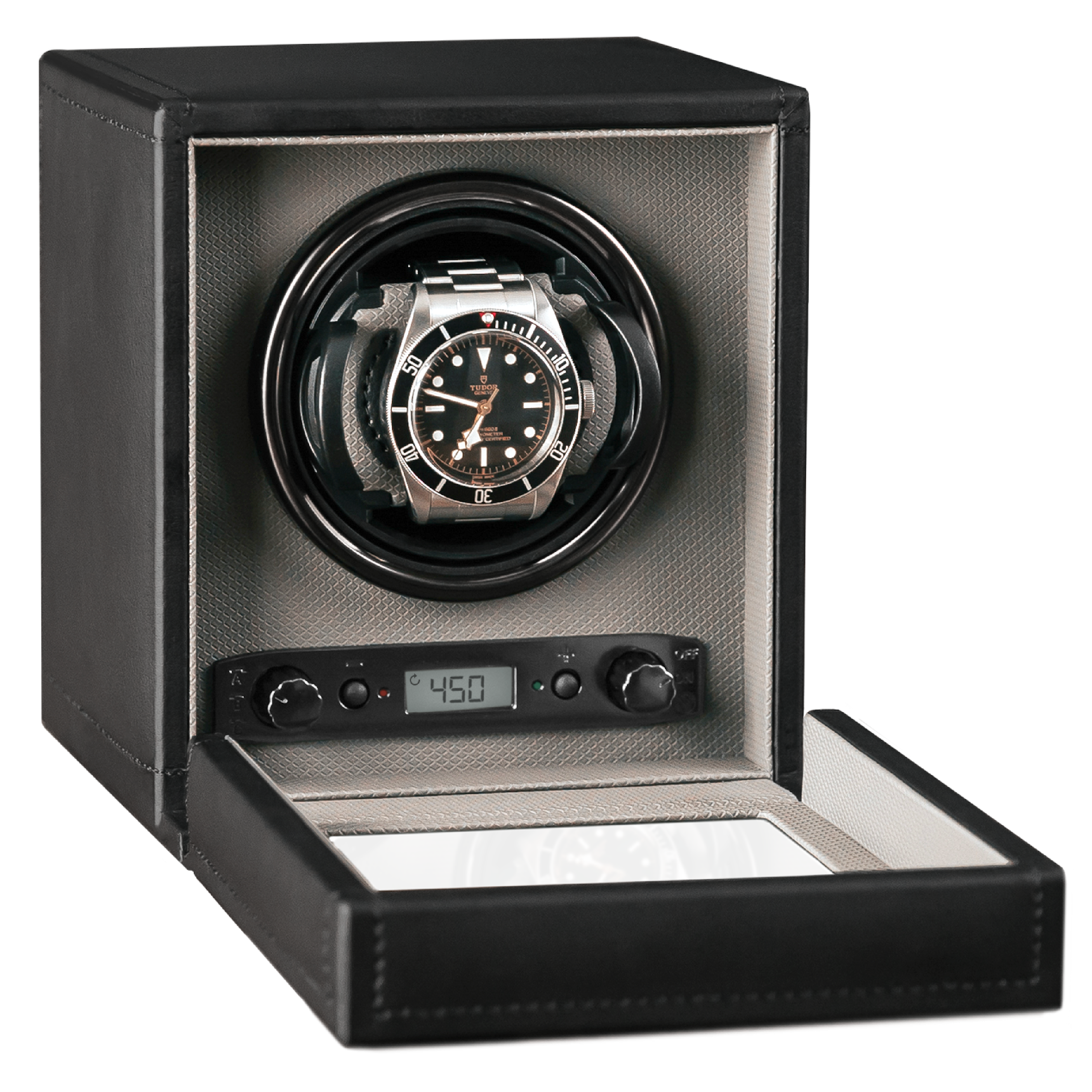
It’s a beautiful afternoon for a finely crafted cigar, and with dinner a few hours out, there’s plenty of time to puff away the remains of the day. But as you reach for the lid of your trusty humidor box, an unsettling sight greets you. Your hygrometer is showing some disturbing humidity levels, and as a twinge of fear shoots down your spine, you hastily wonder what could be wrong.
Either the lid did not seat properly after your last smoke session, the humidification media within your humidor has joined the dark side, or the hygrometer itself is reading incorrectly. Although the first two potential causes are indeed possible, chances are that it’s the latter of the lot that has your humidor readings looking cattywampus.
When hygrometer readings start looking as lopsided as your aunt’s holiday fruitcake, bad things start to happen, and you are left wondering what measures must be taken. It’s time to calibrate that digital or analog hygrometer you depend upon, and here’s how you can accomplish this task at home for cheap.
Tobacco Nerd Note! Calibration should only be attempted on your own if your hygrometer shows significantly incorrect readings. Otherwise, home-calibration is more likely to do more harm than good. The reality is that calibration for hygrometers is a delicate business, and it requires specific equipment to be done by the book. Klaro humidors are all calibrated to the most accurate degree before being shipped to our customers, and we stand behind the hygrometer readings you’ll get out of the box.
Are Digital or Analog Hygrometers Better?
Before you can even begin your “calibration operation,” you have to determine what kind of hygrometer is stuffed into that humidor and whether it can be easily removed and recalibrated. Whether it’s a glass-top humidor on Amazon or an heirloom cabinet humidor you got from your grandfather, the hygrometer registering humidity levels inside will either be an analog or digital device.
As opposed to their analog alternatives, digital hygrometers almost always come properly calibrated, and in most cases, are far superior concerning accuracy. Not only does a numerical read-out with decibel readings offer pinpoint accuracy in real-time, but digital hygrometers are generally easier to read.
It’s not that there is anything inherently wrong with a quality analog hygrometer. As long as they are calibrated and working properly, they will get the job done just fine. There’s also something inherently classy about an analog hygrometer face, especially when it is mounted externally on a humidor box.
Speaking of mounting locations, you should always make sure that the hygrometer you plan on calibrating can be easily removed from the humidor it is registering. Standalone hygrometers are useful in that they can be easily moved around and removed for calibrating/servicing, but they can also take up valuable real estate.
This is why most humidors come with their integrated hygrometer, with mounting locations along the lid and ensconced within the humidor wood across the front of the humidor both providing ideal locales.
A well-designed cigar humidor with an integrated hygrometer will allow easy removal for servicing and will maintain accurate readings once fully calibrated. A device that cannot be easily removed (or popped out at all) is something to watch out for when buying a humidor, as it makes recalibration exceedingly difficult.
Tobacco Nerd Note: Cigar tobacco thrives in an environment with 65-72% humidity, so maintaining that equilibrium within your humidor box should be a constant priority. The only time lower humidity levels are advisable is when aging and long-term storage are in the cards, which in itself requires its diatribe.
Two Easy Ways to Test and Calibrate a Hygrometer
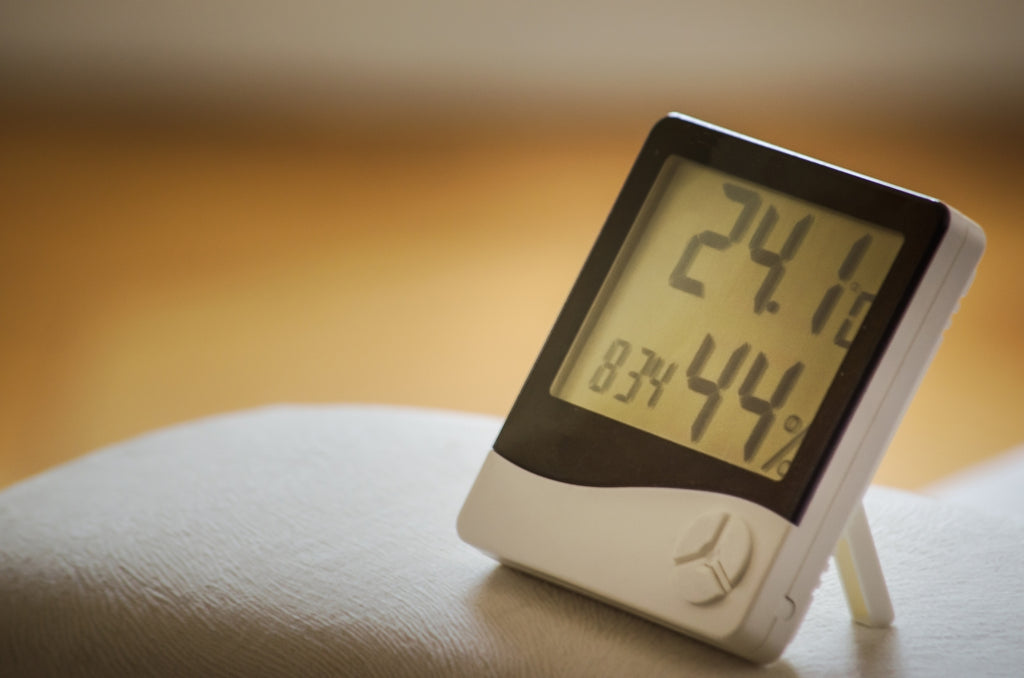
Regardless of whether they may be of an electronic or analog pedigree, hygrometers for humidors are a vital weapon in one’s cigar-smoking armory. Having the ability to visually gauge precisely how much humidity there is in a well-made humidor box, and eliminates the need for guesswork along with the risk of over-humidifying.
While there are several ways of calibrating a hygrometer, the following two methods return consistent results, cost next to nothing, and can be conducted in the comfort of your own home. Since both techniques require sourcing supplies from the kitchen, we advise moving the entire operation to the kitchen counter.
However, if the type of humidor box you store your stogies in is some massive humidor cabinet that weighs 8,000 kilos, then save yourself a hernia and bring the show to that monolith lurking in the corner.
For those of us with smaller humidors, moving to the kitchen comes with a reduced risk of spills and easier clean-up. Performing this process in the kitchen will also provide you with easy access to that secret stash of cookies you’ve been hoarding. We’re not judging. Here at Case Elegance, having a snack while you wait for your hygrometer reading to recalibrate is a widely accepted, and often encouraged practice. But I digress…
Method 1: The Old Paper Kitchen Towel Test
Right, so the first method for calibrating a hygrometer that’s out of whack is to take a damp (not soaked) wad of paper towels and stuff the hygrometer within their folds for 45 minutes before placing everything in an airtight container or plastic bag.
Exposure time complete, remove the hygrometer, and examine the humidity reading. A properly calibrated hygrometer will read 100% relative humidity (RH) after coming into contact with moisture at this level. Any reading lower than that will provide you with a reference point for adjustment.
For instance, if your hygrometer reads 80% after its moist paper towel session, then you know that it’s about 20% off, and should be adjusted accordingly.
To further test this hypothesis, simply reinstall the hygrometer, and wait for it to settle on a particular humidity reading. If it shows 50% humidity, then you know that the actual humidity within your humidor box is spot-on, and sitting squarely at 70%.
On analog hygrometers, adjustment merely requires turning the knob on the back of the hygrometer until the gauge reads the proper humidity level. Digital hygrometers either have a reset button or recalibration settings that allow you to manually select the proper humidity level.
Tobacco Nerd Note: If your hygrometer reads humidor humidity percentages that do not match the original readings during the paper towel test, restart the procedure and see if you get the same results. Any recorded inconsistencies likely mean that your hygrometer has malfunctioned and should be replaced.
Method 2: The Table Salt Test
The second way to test your hygrometer’s accuracy (or inaccuracy in this case), is to conduct a “salt test.”
To perform this procedure, take a plastic lid from a jar and place 1 teaspoon of salt inside. Then, add a splash of water, and mix the two until a gritty paste is achieved. Carefully slide the hygrometer and saline-rich plastic lid into a sealed bag or airtight container, and let your little experiment sit for at least eight hours. This should allow enough time for the hygrometer to produce a reading that sits right at 79% humidity. Anything within more than a couple of percentage points of this figure requires recalibration to get the hygrometer reading 79%. For example, if yours reads 76% during the salt test, you are 3% low.
Just like the analog hygrometer calibration technique, you can take a two-step approach and place any hygrometer for humidors back in its home after conducting the salt test. Any discrepancies during this stage or within a secondary salt test mean that your hygrometer has been compromised in some way and should be replaced.
Tobacco Nerd Note: For those who do not have an adjustable hygrometer, we suggest spending the money and getting yourself a reliable hygrometer. Chances are the cigars you smoke cost way more than a new hygrometer, and their very livelihood depends upon how accurate those readings are.
Parting Puffs
Assuming that your hygrometer is accurately displaying humidity levels at all times is a foolish notion, for even the best digital hygrometers on the market occasionally need a quick reset.
This has led to certain cigar enthusiasts routinely recalibrating their humidity detection devices, even when conditions within their humidor appear nominal. Excessive? Perhaps. But as you have just discovered, the task of calibrating a hygrometer is neither difficult nor expensive, so you can’t fault them for being careful.
It doesn’t matter if you got your humidor on Amazon or built that cigar box from scratch, both an analog and a digital hygrometer for humidors requires upkeep. So if that humidity reading is any more than a couple of degrees off from what it should be, then it might be time to recalibrate that hygrometer gauge.







